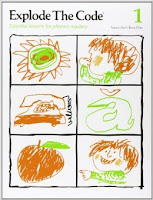It is important that your child not only read the words in a text but also understand the meaning of what he or she is reading. You can help your child read with understanding by giving him or her assistance in using various comprehension strategies, such as these:
- making connections to things he or she already knows
- creating mental pictures of what is happening in a story
- asking questions while reading
- determining important points
- reading “between the lines”
- synthesizing or summarizing information
- using strategies for figuring out difficult words
Here are suggestions for using some of these strategies with your child.
Asking questions. Ask questions such as “Why is this happening?”,“What might
happen next?”, or “Does this make sense?” Such questions help children make
connections among various parts of a story.
Reading “between the lines”. Your child needs to learn to use information in
the story, and from his or her own knowledge and experience, in order to
make inferences – that is, to discover meaning that is not stated outright. This
strategy of reading “between the lines” involves gathering clues and using
them to “create” meaning.
Synthesizing and summarizing. Your child needs to learn to take all the information
from his or her reading, summarize the important points, and then put
it all together like the pieces of a puzzle.
Using strategies for figuring out difficult words. There are various strategies that
your child can use to figure out a word he or she doesn’t know or a difficult
word. If sounding out the word doesn’t work, encourage your child to:
- divide the word into smaller parts;
- reread the words before and after the difficult word;
- skip over the word for the moment and read on farther;
- talk about what he or she has read so far to check understanding.
If a mistake doesn’t affect the meaning, let it go. Allow your child time to
figure out what a word might be or to recognize a mistake.
------------- Talk With Your Child-----------------
Research shows that listening and speaking to others are the foundation for
developing reading and writing skills. Children often need to talk about their
ideas before they can put them down on paper effectively. Here are some
ways of encouraging your child to talk with you:
- Have your child tell stories at special family events such as celebrations or holidays.
- Take turns sharing humorous family stories with your child.
- Be positive and encourage your child to share his or her opinions and feelings.
- Show interest in what your child is saying by being a good listener.
----------------Make Reading Enjoyable--------------------
You can help your child enjoy reading by helping him or her find interesting
things to read. If your child enjoys reading, he or she is likely to read a lot and
become a proficient reader. Here are some suggestions for encouraging your
child to read:
- Read with your child.Talk about what you are reading together – for example, compare characters in the story with people you both know.
- Make sure that you have books, magazines, and other reading materials on hand for long car rides or train trips.
- Browse together in libraries and book stores.
- Look at interactive CD-ROMs and the Internet as well as books.
- Encourage your child to look at the graphic features in reading materials, such as photos, illustrations, and charts.
- Help your child understand how they are used and what their purposes are.
- Access free resources on the Internet, such as Brand New Planet (at www.thestar.com/bnp).
- Consider getting a subscription to a children’s magazine on nature, sports, science, or another area that interests your child.
-----------------Encourage Your Child to Write------------------
Your child needs plenty of practice in writing for a variety of purposes. Here
are some things you can do to encourage your child to write on a regular basis:
- Make sure that your child sees you reading and writing – for example, rereading a letter as you write, preparing a grocery list, or keeping a journal while travelling.
- Look for opportunities for purposeful writing at home, and encourage your child to read and write letters, lists, messages, postcards, thank-you notes, and so on.
- Encourage your child to keep a scrapbook of family holidays and to write captions or brief descriptions underneath the photographs.
- Provide interesting stationery, journals, pens, and stickers to encourage writing.
- Play various word games.
- Encourage your child to enter writing contests in local newspapers or to write “letters to the editor” on issues he or she feels strongly about.
- Encourage your child to write letters to obtain free materials that are linked to his or her interests. Make writing an enjoyable, positive experience for your child.
Here are some questions that you could ask your child in order to encourage
him or her to read critically:
- What is this book about?
- Why are you interested in reading it?
- What does the author of this book want us to know or think?
- Does he or she want us to believe something?
- What does the author say about children, teenagers, and parents in this book?
- Are all children like this?
- How has the author used words and images to communicate his or her message?
- Are the opinions in this book fair?
- How do you feel about this book?
- What do you think the person who wrote this book is like?




















